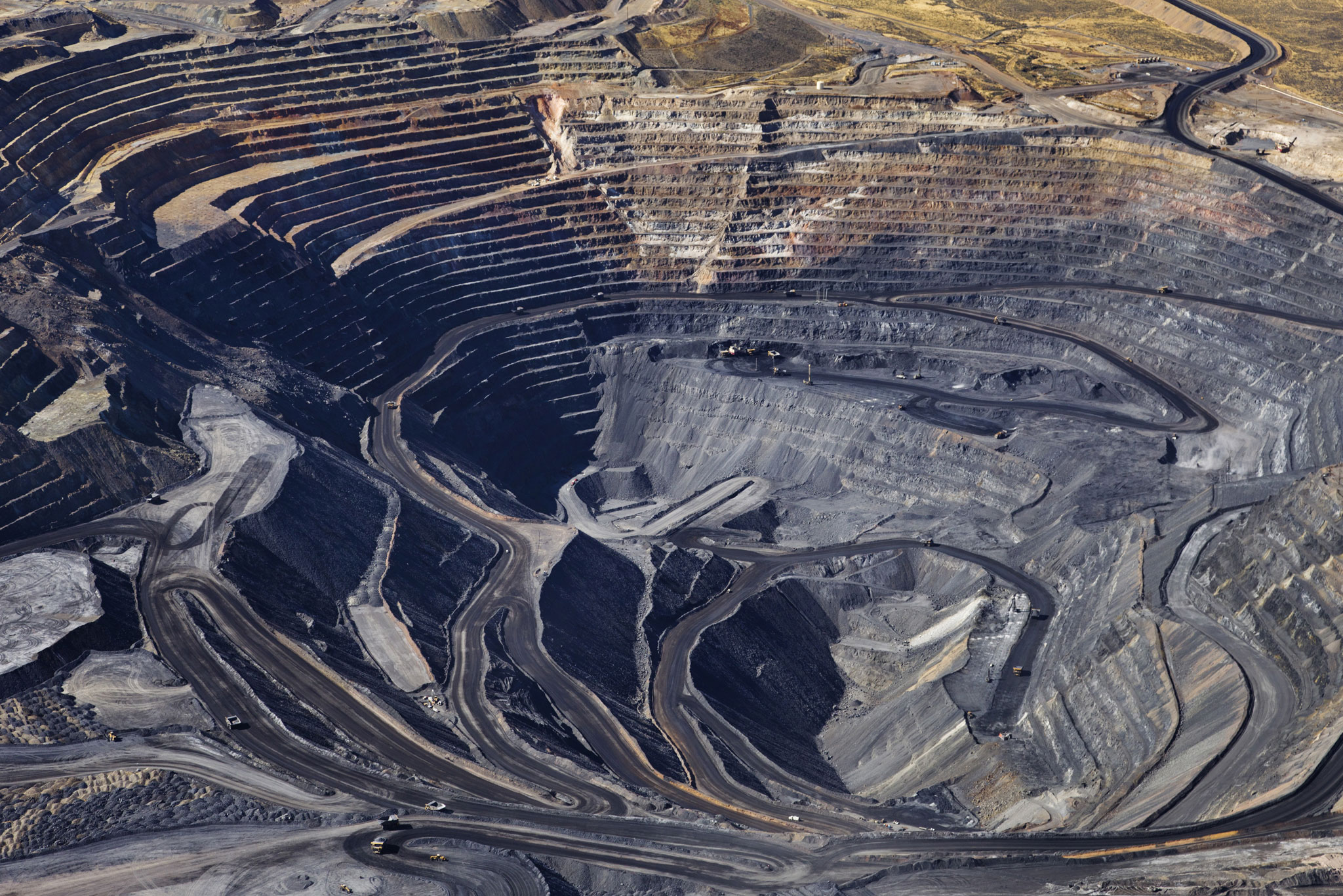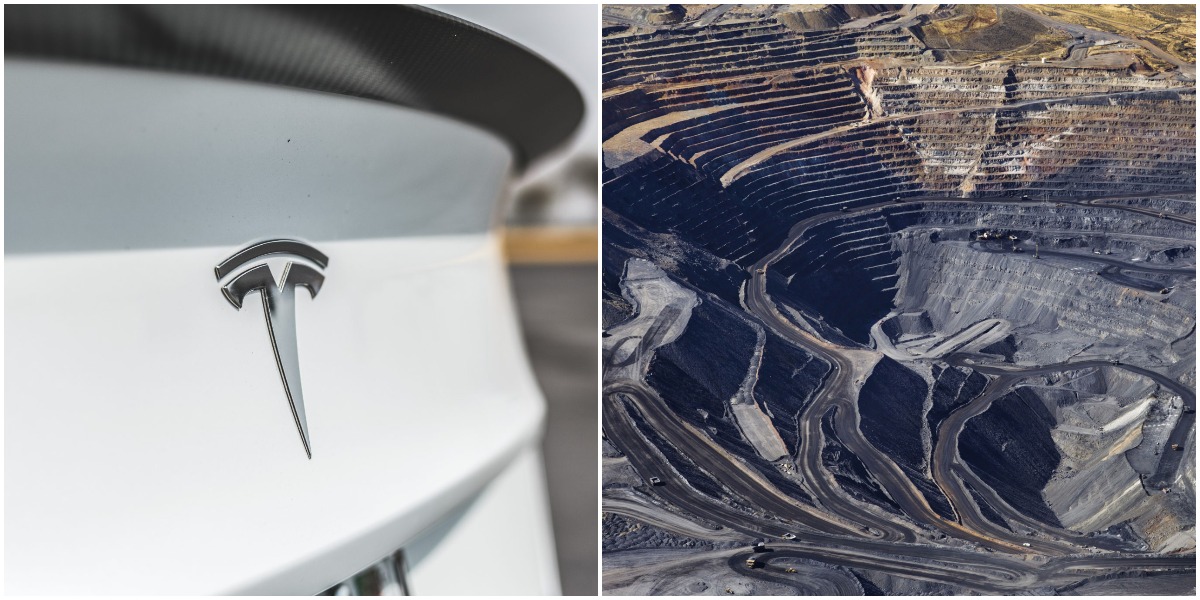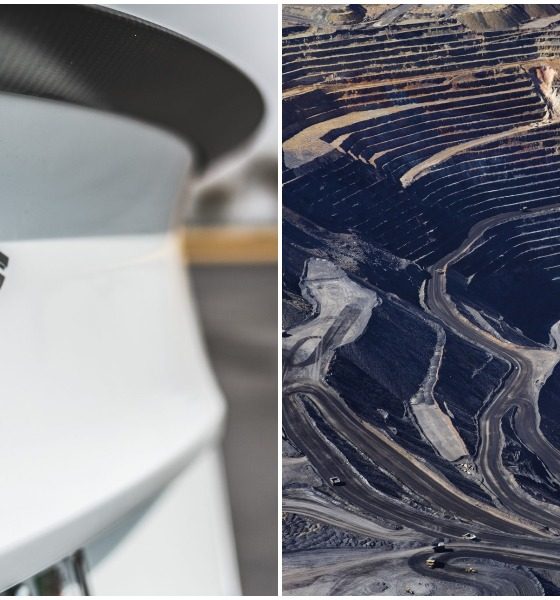Tesla CEO Elon Musk promised a “giant contract” to a nickel supplier during the Q2 2020 Earnings Call. The problem is that the company will have trouble finding an efficient and environmentally-friendly nickel mine, and it could prove to be Tesla’s biggest challenge yet.
Nickel is a crucial metal in electric vehicle batteries because it can increase energy density and provide cars with more range. Musk stated during the Earnings Call that nickel-based cells are essential for the development of larger vehicles, like the Tesla Semi, for example. “Where every unit of mass that you add in battery pack, you have to subtract in cargo,” he said. “So it’s very important to have a mass efficient and long-range pack.”
Nickel-based cells would give Tesla an advantage in electric vehicle range, a category where the company already leads by a sizeable margin. However, with new vehicles on the way, cells have to be adjusted to work with specific workloads. The Semi is an excellent example of this.
Nickel could replace cobalt in Tesla’s current battery cells. Cobalt, a controversial element on its own, is responsible for stabilizing the cell and has been effective in increasing the safety of the high-energy batteries that Tesla has used. However, the mining process of cobalt is questionable, and mines which can obtain it likely are using child labor, which is highly illegal. It also is not environmentally-friendly to mine.

Tesla has taken extra steps to ensure that its cobalt suppliers are treating their workers humanely through a series of due diligence checks. Third-party companies complete random visits to these mines a few times a year to ensure that the cobalt Tesla is using in its batteries is humanely obtained.
The problem is: Nickel mining isn’t much different. Although it would be advantageous, safer, and provide more range for Tesla’s vehicles, it is tough to find nickel that is environmentally-friendly and responsibly mines. The largest nickel sources are in Indonesia, where millions of tonnes of waste are dumped into the sea, polluting coral reefs and damaging the homes of turtles.
Analysts believe that Indonesian miners will provide nearly all of the growth of nickel supplies over the next decade. With electric cars becoming more popular, batteries will be a large part of the surge in demand for the metal. Still, it is also used in everyday products, like stainless steel appliances, Financial Times says.
Other countries, like Canada and Australia, have nickel mines, but Indonesia is highly concentrated with it.
Steven Brown, a consultant and former employee at nickel mining company Vale, says that it could be challenging for customers who are environmentally-conscious to want products that contain the metal after hearing how some entities dispose of it.
“It could undermine the entire proposition of trying to sell a consumer a product that is environmentally friendly, if you have this back story,” he said.
Even though other countries have nickel available, the increased demand for EVs will require large automakers, like Tesla, to eventually have to source some of the metal from Indonesia. “At some point, it will happen where they can’t avoid Indonesian nickel,” Brown added.
Luckily, Tesla requires its sources to go through due diligence processes, and it is unlikely the company will steer away from them to obtain nickel. Of course, Tesla will benefit from having more nickel, but it has to be sourced responsibly for the company even to consider using it.
On top of that, nickel is the second most expensive metal in EV batteries. It only trails cobalt, which Tesla has worked intensively to get away from because of its environmental and humanitarian impact.
“We use very little cobalt in our system already, and that’s — that may to zero along, so it’s basically about nickel,” Musk said.
There is a delicate balance between positive environmental impact after EVs hit the road and the harmful impact sourcing some of the metals have. However, the automakers do not assume any of the responsibility for the mining companies’ process of getting rid of waste. But it is their responsibility to choose a company that decides to handle the ridding of environmentally-harming materials responsibly.
Tesla has made it a point to choose companies that share their mission for sustainability because the automaker realizes that building an electric car starts with sourcing the materials. If the materials are not responsibly obtained, then the EV isn’t as Earth-friendly as it could be.
Pius Ginting, an environmental activist, summed it up perfectly: “The net result is we have clean air in our cities — but then we destroy a rich biodiversity area.”

Elon Musk
Elon Musk’s X will start using a Tesla-like software update strategy
The initiative seems designed to accelerate updates to the social media platform, while maintaining maximum transparency.

Elon Musk’s social media platform X will adopt a Tesla-esque approach to software updates for its algorithm.
The initiative seems designed to accelerate updates to the social media platform, while maintaining maximum transparency.
X’s updates to its updates
As per Musk in a post on X, the social media company will be making a new algorithm to determine what organic and advertising posts are recommended to users. These updates would then be repeated every four weeks.
“We will make the new 𝕏 algorithm, including all code used to determine what organic and advertising posts are recommended to users, open source in 7 days. This will be repeated every 4 weeks, with comprehensive developer notes, to help you understand what changed,” Musk wrote in his post.
The initiative somewhat mirrors Tesla’s over-the-air update model, where vehicle software is regularly refined and pushed to users with detailed release notes. This should allow users to better understand the details of X’s every update and foster a healthy feedback loop for the social media platform.
xAI and X
X, formerly Twitter, has been acquired by Elon Musk’s artificial intelligence startup, xAI last year. Since then, xAI has seen a rapid rise in valuation. Following the company’s the company’s upsized $20 billion Series E funding round, estimates now suggest that xAI is worth tens about $230 to $235 billion. That’s several times larger than Tesla when Elon Musk received his controversial 2018 CEO Performance Award.
As per xAI, the Series E funding round attracted a diverse group of investors, including Valor Equity Partners, Stepstone Group, Fidelity Management & Research Company, Qatar Investment Authority, MGX, and Baron Capital Group, among others. Strategic partners NVIDIA and Cisco Investments also continued support for building the world’s largest GPU clusters.
News
Tesla FSD Supervised wins MotorTrend’s Best Driver Assistance Award
The decision marks a notable reversal for the publication from prior years, with judges citing major real-world improvements that pushed Tesla’s latest FSD software ahead of every competing ADAS system.

Tesla’s Full Self-Driving (Supervised) system has been named the best driver-assistance technology on the market, earning top honors at the 2026 MotorTrend Best Tech Awards.
The decision marks a notable reversal for the publication from prior years, with judges citing major real-world improvements that pushed Tesla’s latest FSD software ahead of every competing ADAS system. And it wasn’t even close.
MotorTrend reverses course
MotorTrend awarded Tesla FSD (Supervised) its 2026 Best Tech Driver Assistance title after extensive testing of the latest v14 software. The publication acknowledged that it had previously criticized earlier versions of FSD for erratic behavior and near-miss incidents, ultimately favoring rivals such as GM’s Super Cruise in earlier evaluations.
According to MotorTrend, the newest iteration of FSD resolved many of those shortcomings. Testers said v14 showed far smoother behavior in complex urban scenarios, including unprotected left turns, traffic circles, emergency vehicles, and dense city streets. While the system still requires constant driver supervision, judges concluded that no other advanced driver-assistance system currently matches its breadth of capability.
Unlike rival systems that rely on combinations of cameras, radar, lidar, and mapped highways, Tesla’s FSD operates using a camera-only approach and is capable of driving on city streets, rural roads, and freeways. MotorTrend stated that pure utility, the ability to handle nearly all road types, ultimately separated FSD from competitors like Ford BlueCruise, GM Super Cruise, and BMW’s Highway Assistant.
High cost and high capability
MotorTrend also addressed FSD’s pricing, which remains significantly higher than rival systems. Tesla currently charges $8,000 for a one-time purchase or $99 per month for a subscription, compared with far lower upfront and subscription costs from other automakers. The publication noted that the premium is justified given FSD’s unmatched scope and continuous software evolution.
Safety remained a central focus of the evaluation. While testers reported collision-free operation over thousands of miles, they noted ongoing concerns around FSD’s configurable driving modes, including options that allow aggressive driving and speeds beyond posted limits. MotorTrend emphasized that, like all Level 2 systems, FSD still depends on a fully attentive human driver at all times.
Despite those caveats, the publication concluded that Tesla’s rapid software progress fundamentally reshaped the competitive landscape. For drivers seeking the most capable hands-on driver-assistance system available today, MotorTrend concluded Tesla FSD (Supervised) now stands alone at the top.
News
Elon Musk’s Grokipedia surges to 5.6M articles, almost 79% of English Wikipedia
The explosive growth marks a major milestone for the AI-powered online encyclopedia, which was launched by Elon Musk’s xAI just months ago.

Elon Musk’s Grokipedia has grown to an impressive 5,615,201 articles as of today, closing in on 79% of the English Wikipedia’s current total of 7,119,376 articles.
The explosive growth marks a major milestone for the AI-powered online encyclopedia, which was launched by Elon Musk’s xAI just months ago. Needless to say, it would only be a matter of time before Grokipedia exceeds English Wikipedia in sheer volume.
Grokipedia’s rapid growth
xAI’s vision for Grokipedia emphasizes neutrality, while Grok’s reasoning capabilities allow for fast drafting and fact-checking. When Elon Musk announced the initiative in late September 2025, he noted that Grokipedia would be an improvement to Wikipedia because it would be designed to avoid bias.
At the time, Musk noted that Grokipedia “is a necessary step towards the xAI goal of understanding the Universe.”
Grokipedia was launched in late October, and while xAI was careful to list it only as Version 0.1 at the time, the online encyclopedia immediately earned praise. Wikipedia co-founder Larry Sanger highlighted the project’s innovative approach, noting how it leverages AI to fill knowledge gaps and enable rapid updates. Netizens also observed how Grokipedia tends to present articles in a more objective manner compared to Wikipedia, which is edited by humans.
Elon Musk’s ambitious plans
With 5,615,201 total articles, Grokipedia has now grown to almost 79% of English Wikipedia’s article base. This is incredibly quick, though Grokipedia remains text-only for now. xAI, for its part, has now updated the online encyclopedia’s iteration to v0.2.
Elon Musk has shared bold ideas for Grokipedia, including sending a record of the entire knowledge base to space as part of xAI’s mission to preserve and expand human understanding. At some point, Musk stated that Grokipedia will be renamed to Encyclopedia Galactica, and it will be sent to the cosmos.
“When Grokipedia is good enough (long way to go), we will change the name to Encyclopedia Galactica. It will be an open source distillation of all knowledge, including audio, images and video. Join xAI to help build the sci-fi version of the Library of Alexandria!” Musk wrote, adding in a later post that “Copies will be etched in stone and sent to the Moon, Mars and beyond. This time, it will not be lost.”










